“IT came up at the last Champions committee meeting,” a wryly-grinning John O’Connor details. “What if the All-Ireland was a draw? And I wouldn’t be good on the prognostication because I said that it is highly unlikely.”
An unlikelihood that is now a reality, but O’Connor is upbeat. A quick decision was made to bring the ICW programme forward to avoid a direct clash with the replay and the problem has been dealt with now.
“It moves the day earlier but it might not be all bad. I think we should now grasp the fact that it is there, have the big screens in the parade ring and covered areas, have the atmosphere – there will be a crowd there.
“I think it’s just a question of trying to maximise the positives out of a changed situation. I have a lot of faith in (Leopardstown CEO) Pat Keogh’s ability to market things well and I’m sure he’ll do a really good job.”
After a lifetime in this game, O’Connor has learned to roll with the punches. Anyway, the Pat Smullen Champions Race for Cancer Trials Ireland is a reminder of real problems. He is optimistic that significant money can be raised and that the roster of jockeys who answered Smullen’s call will prove an attraction too.
He is happy with the quality of the racing, particularly at Leopardstown and points to the support of the Comer Group and Derrinstown Stud for the Irish St Leger and Flying Five as important steps in attracting the best horses to the Curragh as well.
New facility
Showcasing Irish racing is the ultimate aim of ICW. A state-of-the-art Curragh is integral to that but it has been a rocky maiden season for the new facility. That mistakes have been made is undeniable, but O’Connor notes the teething issues encountered by Ascot and Paris-Longchamp, and is optimistic that under Keogh’s leadership, there will be a seachange.
“I’m confident that it will happen. It hasn’t happened yet. It’s not completed yet. Racecourses that have really good integration with their local area do extremely well. Kilbeggan outperforms its facility if you like. Ballinrobe the same thing because they’re well integrated into the areas that they are. And that’s the challenge for the Curragh. They’re up for it and I’m confident that they’ll do it.”
Racing authorities tend to be very happy to trumpet attendances when positive, while dismissing their importance when they’re not. O’Connor is happy with how ICW has developed but getting more bodies through the turnstiles is a target.
“Attendance is important in my opinion. It’s not the only metric but it is important. I’d like to see attendances climbing.
I know that’s a challenge and we’ve already spoken about the All-Ireland final replay but they’re all challenges you got to be taking head on, to keep integrating more and more people into the business. Because once people come to great meetings like that, there’s every chance that they will come to another meeting. Racing itself has to market that. Any sport is really marketed through its great occasions, whether it’s the World Cup, the All-Ireland or the last match in the Six Nations. That’s what inspires the next generation. This should hopefully do the same for racing.”
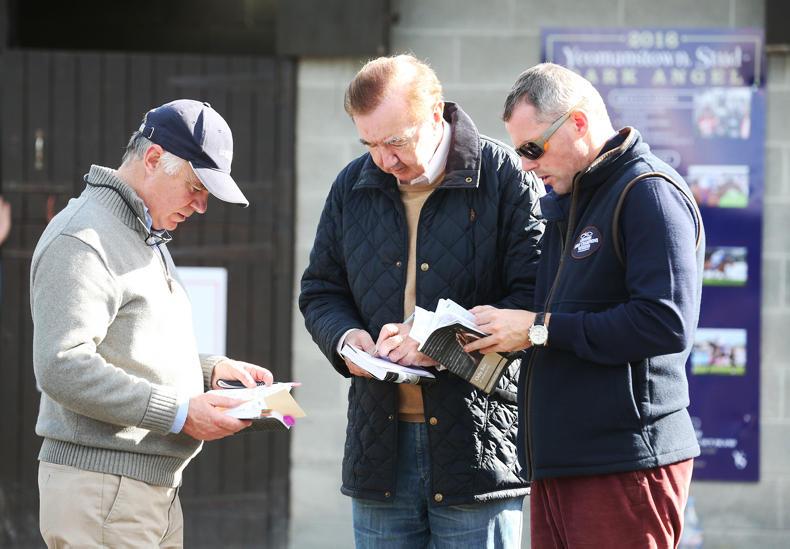
"Every pedigree has two halves and sometimes we only read pedigrees in one half" John O'Connor, Dermot and Mark Weld at the Goffs Orby Sale \Carolinenorris.ie
The day job for the man known as Joc revolves around running Ballylinch, with Castlemartin Stud also operating under that banner since it was purchased by John Malone, around about the same time the American acquired Ballylinch. He joined as manager of Ballylinch in 1988 and as the operation expanded under his expert guidance, was made MD by Dr Tim Mahony.
One wonders if anything has changed under Malone, who visits every summer.
“We sat in this very room when John Malone first came over and I asked, ‘How would you like to proceed?’ He said: ‘Well, you guys seem to be doing pretty good. Why don’t you do more of the same?’ So that’s what we are trying to do. We’ve got plenty of support for what we’re doing and that’s given us plenty of opportunity to invest both in the stallion roster and the broodmare band. And because we’re now populating two farms we now have a bigger broodmare band.
Motivated
“John is fascinating to work for. He grasped the concept very quickly with bloodstock. He gets it. He is fascinated by the intricacies of the business. People that are as successful as John are only motivated by a challenge and it is precisely because this business is so difficult that he has gotten involved.”
There are five stallions at Ballylinch. Fascinating Rock and New Bay have their first yearlings going to the sales this year, while Make Believe’s first crop of two-year-olds is emerging on the track. Beat Hollow is the National Hunt sire, who has produced the incomparable Wicklow Brave and fellow Cheltenham Festival victors Cinders And Ashes and Minella Indo.
Lope De Vega is the boss, a sire of nine individual Group 1 winners who emulated his grandsire Giant’s Causeway and sire Shamardal as champion first-season sire in a debut campaign that produced homebred champion two-year-old Belardo. This year, he added a classic to his stacked CV when Phoenix Of Spain won the Irish 2000 Guineas.
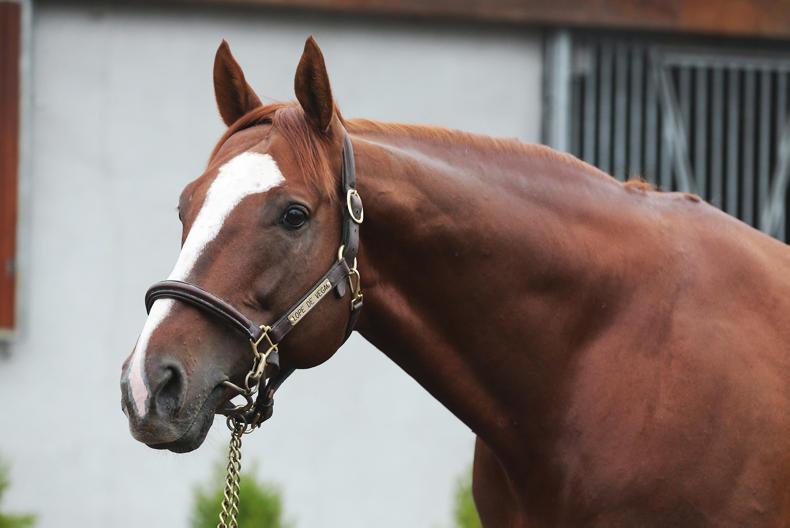
Ballylinch sire Lope De Vega - "The one thing that strikes you when you see him is how athletic he is" \ Carolinenorris.ie
Assistant stallion manager Stephen Cox leads him around after a spell in the paddock for a look. The attitude is very evident. His enthusiasm for his ‘work’ never wanes it seems. Some stallions look like they need a break after a hard season. But the 12-year-old has the constitution of a lion, as befitting the grandson of the ‘Iron Horse’. He is a better mover than his antecedent and what excites O’Connor is that judging by Shamardal, the best may yet be to come.
“He’s a very powerful horse. The one thing that strikes you when you see him is how athletic he is. He’s a big walk. He just wants to get on with stuff. And you can sometimes see that in his stock. They have that kind of natural energy. They have this generosity where sometimes they’ll even do too much.
“He kicked off from the very first crop with us. One of the horses we bred ourselves, Belardo became champion two-year-old in Europe. It was a dream start. You couldn’t get a better start really. But we knew from that first crop.
“I think we sent him 12 mares and from that I think we had seven blacktype horses. So we knew we were dealing with something out of the ordinary. We now send him more mares and better mares. We’ll be expecting to see the fruits of that in the years ahead.
“(The Guineas was great because) it’s the level at which you want to play at – the classic level. He now has 61 stakes winners. He’s a horse that can have a big influence on breeding in the years to come. Interestingly, his own sire is having a great year. He seems to have the best two-year-old in France (Earthlight) and England (Pinatubo) this year.”
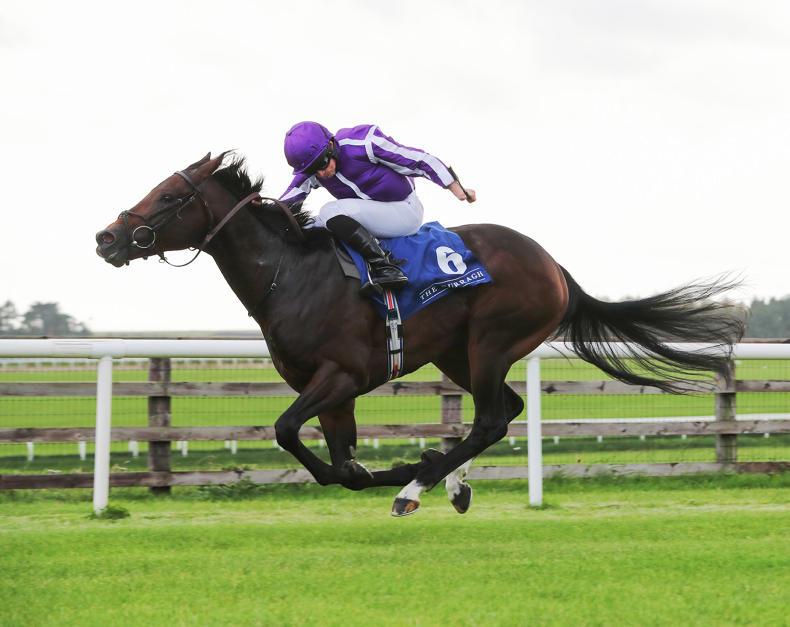
Exciting two-year-old Lope Y Fernandez winning the Round Tower Stakes \ Carolinenorris.ie
While it is always a difficulty for stallion houses to source the next big thing, with so many of the best racehorses unavailable due to their owners being breeding behemoths themselves, Ballylinch can compete for those that are on the market.
“We’re lucky enough in that we can invest in really top-class racehorses with pedigrees. That’s what we try to do. That’s our model, to stand multiple Group 1 winners if we can. But in terms of really high-class, well-bred stallions, when it comes closer the time when they’re going to have runners, there are opportunities to use those at better value.
“You only have to think back to when Danehill was going to have his first runners. Galileo when he was going to have his first runners. When Lope De Vega was having his first runners, I think we stood him at about €12,500. Fortune can favour the brave, people who can identify a young horse who is coming through. There are opportunities to use those horses if you are willing to take the risk at a particular time.
“Apart from form on the track, when choosing stallions you are looking for sire lines that tend to succeed. I love to see a stallion with a good female line. If he’s out of a very good racemare it’s so much the better. Because every pedigree has two halves and sometimes we only read pedigrees in one half. You’re trying to get the most you can from the price that you can spend.”
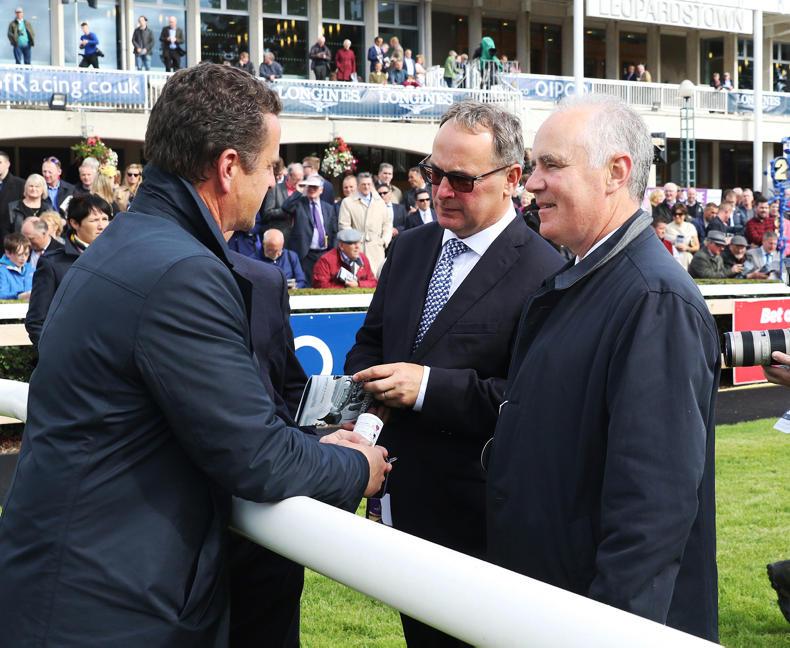
Peter Molony, Joe Foley and John O'Connor at Leopardstown for ICW weekend \Caroline Norris
Synonymous with success
From the time Dermot McCalmont set up Ballylinch in 1914 and stood The Tetrarch, the place has been synonymous with success. O’Connor wasn’t in situ too long when Bob Back had a St Leger winner in Bob’s Return in 1993. Later on, he would become a sire of elite jumps horses. He was succeeded by King’s Theatre.
“I think I’m not being too biased when I say he was one of the great National Hunt sires of the modern era. To win as many championships as he did, without ever covering books that are now regarded as normal ... He had a wonderful temperament – a lovely, kind horse. His stock had that great will to win that you love to see in a stallion. How many times have you seen them come up the hill at Cheltenham or at Galway? He had an extraordinary record at Cheltenham.”
Sales results are important, because breeders need to be rewarded. Ballylinch clients, Vimal and Gillian Khosla realised €3.2 million at Goffs Orby Sale for a full-sister to the Oaks winner they had also bred at Ballylinch, Forever Together.
Do You Love Me has yet to make a public appearance, and it is producing racehorses that is the priority for O’Connor and his team. It is why they give their stallions every chance to succeed. Having in excess of 60 broodmares at the stud is useful in this regard.
“In the past we’ve had stallions who have been incredibly popular at the sales but not very successful afterwards. We’ve also seen the opposite. We’ve seen horses that have taken a while to be recognised as top sires, including both Dubawi and Galileo. They made their own success.”
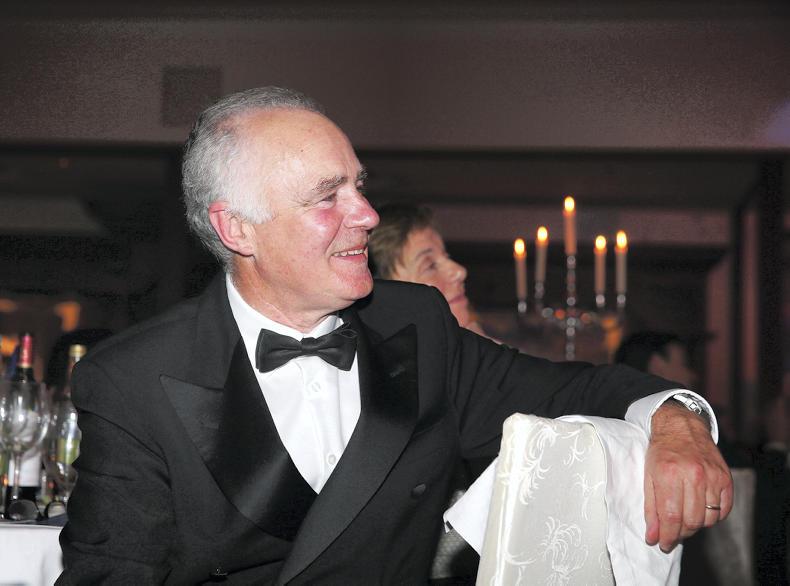
John O’Connor receiving the Hall Of Fame award at ITBA Breeding and Racing Awards in 2018 \Carolinenorris.ie
Maintaining established Ballylinch lines such as those of Ingabelle (dam of the farm’s first Group 1 homebred filly Priory Belle), Majinskaya (grandam of Belardo) and Pharamacist (dam of Breeders’ Cup hero Red Rocks) is a priority, while also developing more top-level families.
O’Connor also oversees the racing string, which has largely comprised fillies with a few to their future careers. This year, they have been successful racing colts with China Horse Club among other partners. Of the five two-year-olds that have run so far, four have won, while the other was placed.
“If one is good enough to make a stallion they’ll come back here. But that’s a long shot, to race a group of colts and have one good enough to make a stallion. It’s a dream and hopefully it will come true. But it’s not an easy thing to do.”
Brexit worry
Brexit is a worry, naturally, though the shadow of the “sword of Damocles” that British Prime Minister Boris Johnson referred to during the week has not influenced any decision made by O’Connor nor will it do so.
“I don’t think anybody really is going to be able to tell you what sort of effect that is going to have. It’s unlikely to be helpful. Other than that/ it’s very difficult to say what the outcome is going to be. Certainly if the UK was to go into recession it would have an impact. We’re selling a luxury good. I hope that won’t be the case. That whatever the outcome of Brexit the UK will continue to have a good, strong economy. We need to export horses because our own domestic racing industry is not big enough to absorb the horses that we breed. It is challenging to export to France because you’re selling horses that don’t have premiums to sell so they must be high class.
“Racing in the UK has a different model. It’s based on a very large number of racetracks and a very large number of fixtures. So there’s a need within their programme for a large number of horses to fill those fixtures.”
His involvement with the EBF has been long-standing. Just like the ITBA, he is a former chairman and is proud of the work both organisations have done on behalf of breeders.
The EBF in particular, as a leading sponsor, has increased prize money significantly and in recent years, breathed life into the lower end of the sales market with the creation of an auction series in both flat and National Hunt that have also attracted major sponsorship from Foran’s and Connolly’s Red Mills.
Prize money remains the single biggest issue in racing he contends, particularly in Britain. It is easy to point to the success of the racing club and syndicate model in Australia he explains, but the level of prize money that makes it so attractive is incomparable.
We will be announcing an expanded scheme within the next few weeks to help to influence upcoming sales in a positive sense. We’re ambitious to do more stuff to incentivise people to get involved
In terms of attempting to boost that and incentivising a greater depth to sales activity, EBF remains innovative and there is more to come.
“A couple of years back, myself and a few of the other governors of the EBF came up with this scheme where we’d get behind a series of auction races. So we sponsored that to make it attractive for people to buy horses at the more modest cost sector in the business. And that took off and was very successful.
“We’re in discussions at the moment for a new project. We’re hoping it will come to fruition very quickly. We will be announcing an expanded scheme within the next few weeks to help to influence upcoming sales in a positive sense. We’re ambitious to do more stuff to incentivise people to get involved and have a good prospect of success. It’s achievable, not a dream. And we’re delighted to see trainers coming in and buying horses at the yearling sales. Noel Meade, Jessie Harrington and Tom Mullins have had a lot of success working their way through this auction series. And the things we’re planning at the moment we hope many more people will have plenty of success.”
Sales issues
From a sales perspective, he doesn’t view there being many issues in terms of integrity despite the BHA investigation and notes that the leaked report concluded that 95% of people were doing things properly.
“I’d say that probably stands up pretty well with other businesses. So we should look to the positives, that almost everybody does things correctly as they should be done. And if there’s an issue with a small number of people, then they should be dealt with.”
Growing up on a drystock farm on the edge of Cashel, O’Connor was exposed to horses early. Jack and Biddy bred the likes of European champion sprinter Bay Express, and Triumph Hurdle winner Northern Game. Biddy’s brother Michael O’Keeffe would breed Tourist Attraction, who provided Willie Mullins with his first Cheltenham success, while Jack’s brother, Paddy bred Ten Plus and Western Sunset.
John was obsessed with pedigrees from an early age and jokes that he was the first man to fall off of Silver Buck, having bought him as an unbroken three-year-old at Ballsbridge, and doubled his money when selling the future Gold Cup and dual King George winner to Barney Curley and Christine Feather.
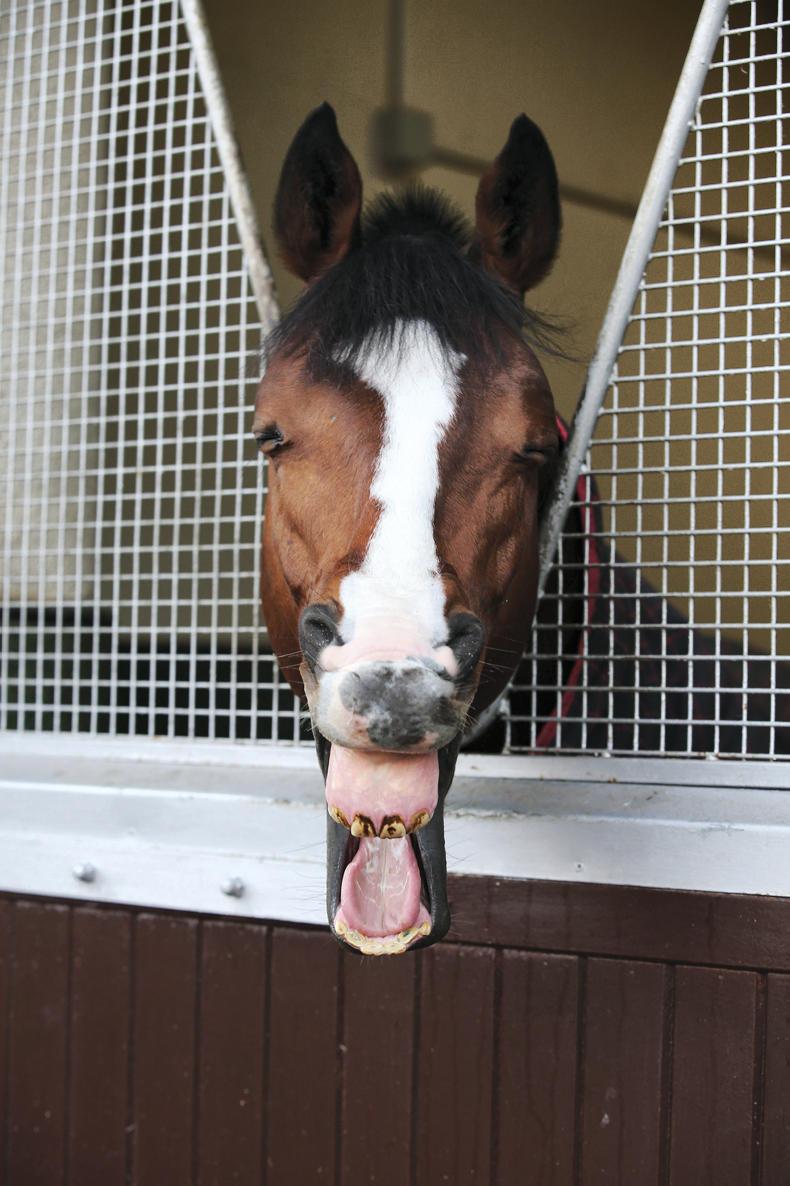
Ballylinch Stud-bred champion two-year-old Belardo at Kildangan \Carolinenorris.ie
A career as a vet brought him around the world before he settled in Baroda Stud as resident. The sudden death of Seán Doyle brought about a promotion as manager but with the stud to be sold, Dermot Weld set up a meeting with Mahony and the rest is history.
He has also bred the Group 1 winner Astaire with his sister Anne Hallinan, while he and wife Angela run Limefield Stud, just over the hill from Ballylinch
“Astaire was one of the really good crops. I’ve actually been quite lucky with Intense Focus. I bred him. I bred Intense Romance, Just Another Bottle, a whole pile of stakes winners by a horse that wasn’t seen as being that successful. I bred a very good dual-purpose horse called I’m Supposin. He was placed in two Champion Hurdles. And we bred Lady Kaya. That was both brilliant and also very sad.”
He pays tribute to the team of people that have made Ballylinch such a triumph, many of them by his side a long time.
It is the passion for the industry and all it entails that stands out though, and explains why at 63, John O’Connor is busier than he ever was.
Just the way he likes it.